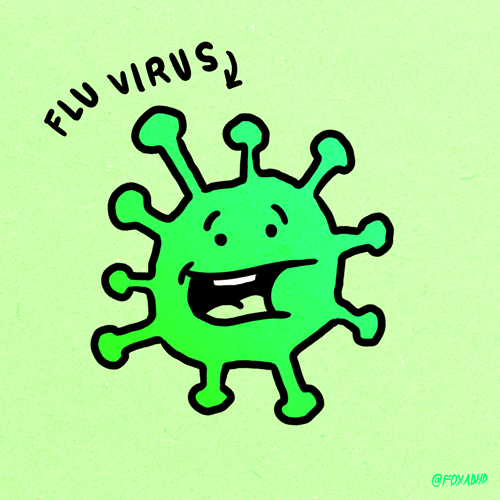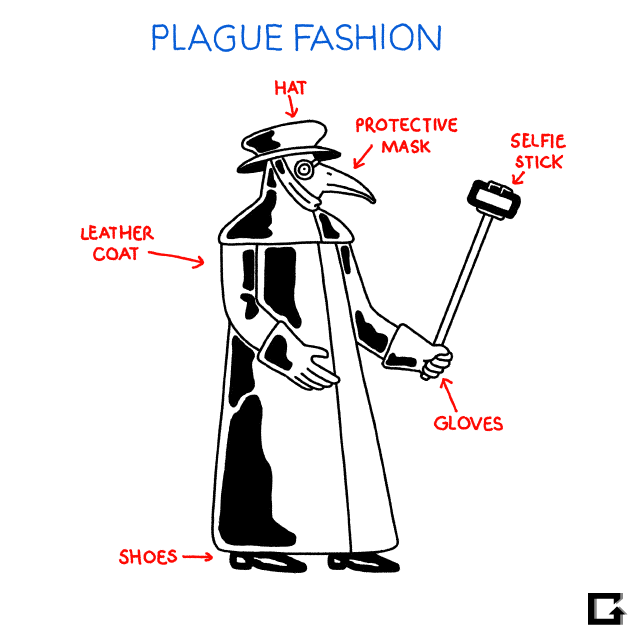The novel coronavirus is sucking pretty hard at the moment, but we will survive. Yes, times are tough, but plagues have always been a part of human life. Bacteria and viruses shaped the course of events a little like how bouncers regulate a club. They let some empires in the VIP section while showing others the exit door. Also like bouncers, no one really likes them.
COVID-19 is undoubtedly the hot microbe this season. But, how does it stack up the Spanish Flu, the Bubonic Plague and other famous plagues? (Respiratory infections are so 2009.) Our world is on lockdown, but at least it’s still spinning. Plagues of yore turned cities into graveyards. If you ever played The Oregon Trail (aka the best computer game of all time), then you already know. For everyone else, here’s a list that puts it all in perspective. We compare coronavirus to these diseases and try to find lessons for how to survive.
Cover Photo: Warner Bros. (Getty Images)
Good news: 6 Organizations Helping Those in Need During the Coronavirus Outbreak
Letter from the editor: This Should Be Our Turning Point, Not Our Breaking Point
Help Prevent the Spread of the Coronavirus
Visit the Centers for Disease Control at CDC.gov or the World Health Organization at Who.int for the latest information on the coronavirus and learn what you can do to stop the spread.
Follow Mandatory on Facebook, Twitter, and Instagram.
Ranked! The worst plagues in Human History
-
9. Zika Virus

Unlike most of the entries on this list of little horrors, the Zika virus spreads mainly via Aedes mosquitos. Since first being detected in 1947, its estimated fatality rate in Brazil is 8.3 percent, but the way it kills babies give it awfulness beyond numbers.
-
8. SARS

SARS, or Severe Acute Respiratory Syndrome, first broke out in Asia in 2003, infecting 8,098 worldwide, of which 774 died. In the U.S., only eight people tested positive, though our good luck then may have helped make us a little too complacent.
-
7. West African Ebola

The West African Ebola epidemic from 2013 through 2016 only hospitalized 28,616 people, but its case fatality rate was a monstrous 40 percent. When it comes to microorganisms, size isn’t everything.
-
6. H1N1 Swine Flu

In 2009, a novel Influenza A virus (H1N1) emerged in the U.S., which seemed to affect younger populations more severely than older ones. Over the next year, it infected 60.8 million people, caused 274,304 hospitalizations and killed 12,469, showing the disease was nothing to sneeze at.
-
5. Antonine Plague

The Antonine Plague devastated the Roman Empire from roughly 165 to 180 AD. Though estimates of the mortality rate vary from 2 percent to more than 25, at least the dead avoided the terrifying reign of Commodus — the bad guy in Gladiator — who became emperor in 180.
-
4. The Plague of Athens

In May of 430 BC, a plague broke out in Athens, killing up to 100,000 people, or a quarter of the city-state’s population. The historian Thucydides left a firsthand account of the plague, which sounds a lot like people’s social media feeds these days.
-
3. AIDS

Since the first case of AIDS was detected in 1981, 74.9 million people have been infected and 32 million have died because of the virus, according to the WHO. While advances in treatment have come a long way since then, 1.7 million new cases were detected last year, with 770,00 dying of the disease.
-
2. The Spanish Flu

The Spanish Flu, also known as the 1918 flu pandemic, killed at least 50 million worldwide, with around 675,000 deaths in the U.S., according to the CDC. It was definitely no bueno, especially when you consider the U.S. population was only around 103 million at the time.
-
1. The Black Death

Coming in at No. 1 is the Black Death, estimated to have killed 30-50 percent of Europe’s population from 1347 through 1351. It hastened the decline of feudalism and killed without discrimination, so at least it was an equal opportunity apocalypse.









